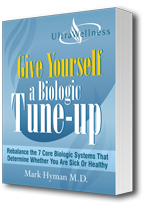The purpose of screening is early diagnosis and treatment. Screening tests are usually administered to people without current symptoms, but who may be at high risk for certain diseases or conditions.
You may be screened to find out if you have risk factors for coronary artery disease before you begin to have any symptoms. Screening involves assessing your medical history and lifestyle habits that may increase or decrease your risk of having a heart attack.
Screening Tests
Blood pressure check—A blood pressure reading measures the amount of pressure in your arteries when the heart is pumping (the upper number) and when your heart is resting between beats (the lower number). For example, normal blood pressure is 120/80 or lower. Consistent blood pressure readings of 140/90 or higher are considered high blood pressure . A blood pressure test is quick and painless. A blood pressure cuff will be placed around your arm. Air will be pumped into the cuff to tighten it around your arm and then released while a healthcare professional listens with a stethoscope.
Cholesterol—Cholesterol levels are checked with a blood test. A blood sample will be taken from a vein in your arm. Cholesterol tests involve measuring total cholesterol, HDL (“good”) cholesterol, LDL (“bad”) cholesterol, and triglycerides.
The chart below lists healthy and unhealthy ranges for each type of cholesterol.
Total Cholesterol
Desirable
Less than 200 mg/dL* (5.2 mmol/L)
Borderline high
200-239 mg/dL (5.2-6.1 mmol/L)
High
240 mg/dL (6.2 mmol/L) and above
Low Density Lipoprotein (LDL)
Optimal
Less than 100 mg/dL (2.6 mmol/L)
Near or above optimal
100-129 mg/dL (2.6-3.3 mmol/L)
Borderline high
130-159 mg/dL (3.4-4.0 mmol/L)
High
160-189 mg/dL (4.1-4.8 mmol/L)
Very high
190 mg/dL (4.9 mmol/L) and above
High Density Lipoprotein (HDL)
Protective effect against heart disease
60 mg/dL (1.6 mmol/L) and above
Healthy range, but higher is better
40-59 mg/dL (1.0-1.5 mmol/L)
Major risk factor for heart disease
Less than 40 mg/dL (1.0 mmol/L)
Triglycerides
Normal
Less that 150 mg/dL (1.7 mmol/L)
Borderline high
150-199 mg/dL (1.7-2.2 mmol/L)
High
200-499 mg/dL (2.3-5.6 mmol/L)
Very high
500 mg/dL (5.7 mmol/L) and above
Note: These categories apply to adults aged 20 and older. *mg/dL = milligrams per deciliter of blood (mmol/L= millimoles per liter of blood)
Screening Guidelines
The National Guidelines Clearinghouse recommends adults up to age 64 receive blood pressure and cholesterol tests at least every three to five years. Adults over age 65 should have the screenings every one to two years.
References
References:
American Heart Association website. Available at:
http://www.americanheart.org
. Accessed August 14, 2008.
National Guidelines Clearinghouse website. Available at:
http://www.guideline.gov/
.
National Cholesterol Education Program. National Heart, Lung, and Blood Institute website.
http://www.nhlbi.nih.gov/guidelines/cholesterol/index.htm
. Accessed January 23, 2007.
Click Here to See All 22 Treatments for Heart Attack
FoundHealth has 22 treatments for Heart Attack!
See all Heart Attack Treatment
options and start building your care plan today.

